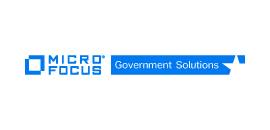This article is an excerpt from GovLoop’s recent report, “Making Your Agency Cloud Smart.” Download the full report here.
The federal Cloud First policy debuted during a time when cloud computing was a relatively new technology in government. Although the policy was groundbreaking in federal IT, cloud’s novelty left many agencies unprepared for how to maximize the technology’s benefits.
“Cloud First attempted to force adoption of cloud services,” said Chris Leffler, Sales Engineer at Micro Focus Government Solutions, which is an IT software provider. “The result for agencies was often a lack of expected functionality or quality. In some cases, there were projects that needed to be completely decommissioned.”
Upon releasing Cloud Smart in October 2018, the federal government admitted that Cloud First is too elementary to address the full scope of cloud transformation across its many agencies. Cloud Smart differs from its predecessor by focusing on adopting cloud effectively rather than deploying the technology by any means possible. The new strategy also expands on Cloud First by detailing how agencies can address cloud procurement, security and workforce reform to best meet their individual needs. Cloud Smart additionally accounts for the various cloud models that have emerged since Cloud First appeared.
Leffler said that Cloud Smart is a more nuanced strategy than Cloud First, as it recognizes that each agency successfully migrates to cloud differently.
“Cloud Smart is about using intelligence to evolve in a much more agile and capable manner versus just forcing someone into adopting cloud,” he said.
Speaking at a December 2018 event, Federal Chief Information Officer (CIO) Suzette Kent, whose office is in the Office of Management and Budget (OMB), said that Cloud Smart builds on Cloud First instead of replacing the older policy.
“We transformed Cloud First to Cloud Smart,” she said during the Advanced Technology Academic Research Center (ATARC) Federal Technology Modernization Summit. “And that is in no way an invitation that we don’t want people to look at Cloud First, but we want to enable very methodical decisions, and we want to link all the pieces together through policy.”
Kent added that Cloud Smart tackles many aspects of cloud adoption that Cloud First didn’t address.
“So [it’s] security, workforce, FedRAMP, how we get authority to operate and strongly encouraging all agencies to complete the application rationalization,” she said, referencing the Federal Risk and Authorization Management Program. The FedRAMP program authorizes which cloud providers are secure for providing their services to federal agencies. If you haven’t looked at your whole landscape and know where you’re going, you’re not going to be making the best long-term strategic decisions.”
Ultimately, many agencies struggled with Cloud First when they realized that cost was not the only factor to consider when planning cloud adoption. Some of their legacy technology couldn’t migrate to cloud despite being critical to their mission, and new strategies for procurement, security and workforce training were required for success. Most agencies have realized that an IT portfolio assessment is required first to help provide a prescriptive blueprint for cloud migration as part of an overall strategy for IT modernization.
Download the full report now and find out how your agency can use Cloud Smart to effectively adopt the cloud model that’s right for your organization’s mission.






Leave a Reply
You must be logged in to post a comment.